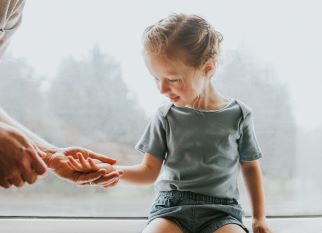June 2023
When Growing Up Hurts
Both grown-ups and kids can hurt their bones. But because they are still growing, children have special kinds of injuries.

Some of these issues will go away on their own. However, other types of aches are more serious and need treatment. Here are some of the reasons your little one hurts—and what to do about them.
Growing pains: Normal aches
About one in 10 kids has growing pains. What most people don’t realize is that they are actually caused by running or playing hard, not growing. But they do happen in children who are still getting bigger.
Growing pains are muscle aches that:
-
Happen in the calf and thigh
-
Come and go, lasting about 10 to 30 minutes
-
Occur late in the day
-
Strike most often on both sides
Growing pains are harmless. They usually do not require any special treatment. You can rub your child’s muscles to help them feel better. If the pain lasts longer than 30 minutes, you can give them pain medicine.
Call your child’s healthcare provider for serious pain or pain lasting a long time, especially in just one leg. Also call if they are limping or have swollen joints.
Growth plate injuries: More serious problems
Your kid’s thighs, fingers, and forearms all have long bones. At the ends of these bones are growth plates. These softer areas will harden when your little one is done growing.
Injuries to these areas are called growth plate injuries. They occur after an accident or when your child plays a sport involving the same motion over and over. Examples include pitching a baseball or running long distances.
Growth plate injuries can change the way children’s bones develop. If your child has one, you will need to get them treatment quickly.
Know when to get help
Signs of growth plate injuries include:
-
Arms or legs that look crooked or strange, or do not bend properly
-
Pain just below the kneecap or in the heel
-
A warm or swollen spot at the end of a bone
-
Limping
-
Being unable to move or put pressure on a limb
If these injuries are not addressed quickly, your child’s bones may not grow the right way. So check in with a healthcare provider as soon as you can.
The provider may use an X-ray or other scan to see their bone. This tells them if your child needs a cast, surgery, or other treatment, such as specific exercises or stretches.